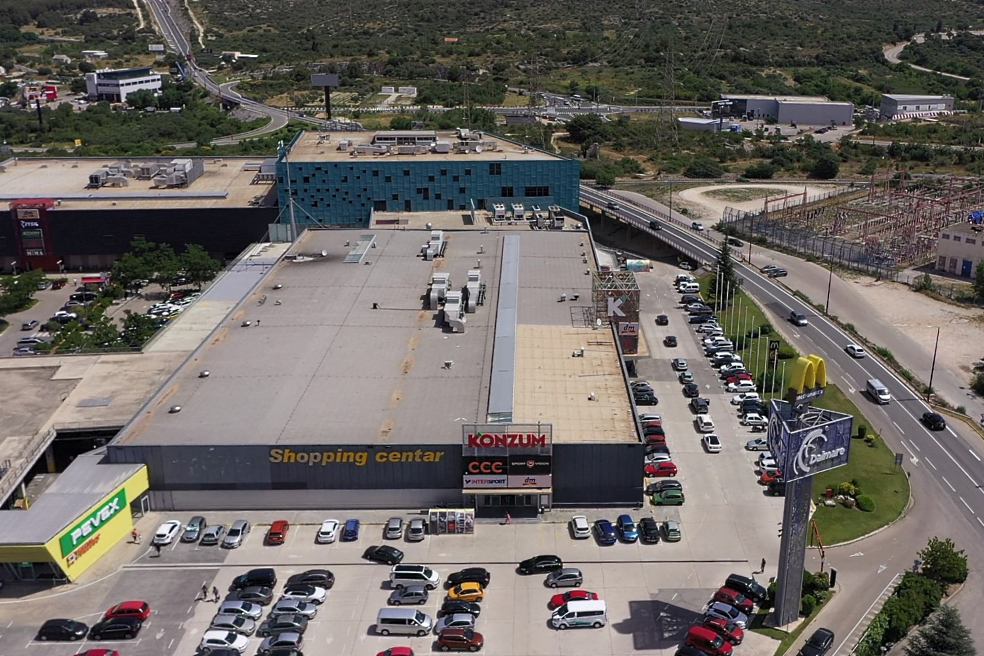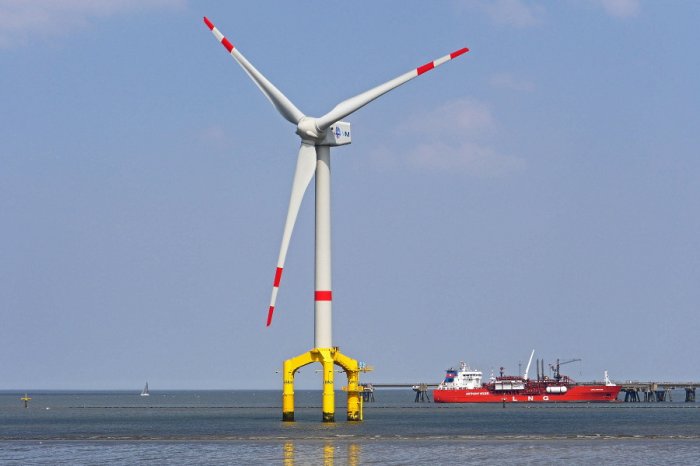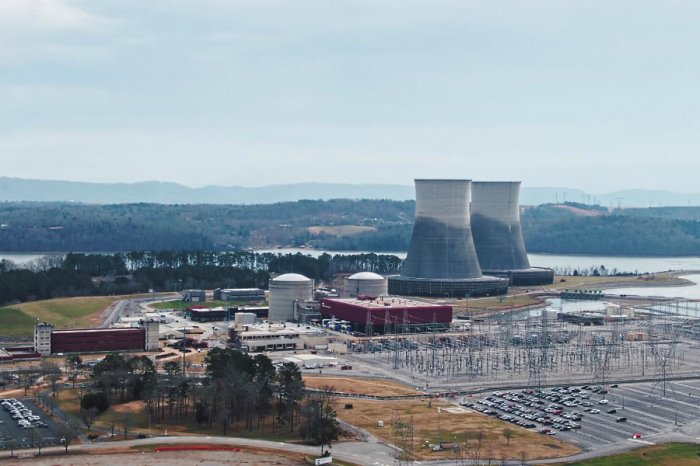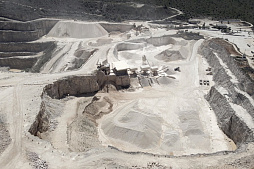To consider an application for financing, fill out the form and send it to us by e-mail along with the project brief, or contact our experts
The main share of investments in commercial real estate projects falls on Europe, North America, East Asia and the Middle East, being an indicator of business activity and the general investment attractiveness of local economies.
Such projects are characterized by high cost, which requires developers to attract external funds.
Bank loans, issue of shares, project finance instruments and bonds remain the most important ways to finance commercial real estate investment projects around the world.
Basics of investment in commercial real estate
In a broad sense, commercial real estate is real estate related to running a business.These include, among others, office buildings, industrial buildings, warehouses, shops, shopping centers, hotels and more. Investing in commercial real estate can bring great returns, but this sector is extremely sensitive to macroeconomic stresses, so financing such projects requires experience and caution.
There are three main ways to invest in commercial real estate:
1. Purchase of ready-made premises with a signed contract and existing tenants. This is a very convenient option, as we do not waste time looking for a tenant. At this stage, it is already known whether the current business is profitable. The new owner only has to meet with the tenants to agree on further terms of the lease.
2. Purchase of empty premises for business and independent commercialization. In order to obtain satisfactory profits, firstly, the investor needs to choose a property with a good location, and secondly, it is necessary to quickly rent it out for a profitable business.
3. Construction of commercial real estate facilities from scratch. This method requires a lot of time and effort, but under certain circumstances, it allows investors to save significantly in the long run. Moreover, construction opens up wide opportunities for the implementation of any ideas without significant engineering restrictions.
The approach to financing commercial real estate (CRE) directly depends on each company and the investment strategy adopted by it.
Some companies focus only on ready-made buildings that need major renovations, while others decide to invest in developer-standard real estate. In the end, it all comes down to the total costs, both in the context of the purchase of real estate and its modernization, renovation and adaptation for rent.
The main advantages of buying commercial real estate projects from an investor's point of view:
• Higher rates of return on invested capital than in the case of bank deposits or bonds.
• Greater protection of the lessor's interests compared to renting residential buildings.
• Greater care of the tenant for the property, since in most cases the rented premises are a showcase of the company that meets customers and business partners.
• Lower interest rate on an investment loan than on a traditional mortgage loan.
CRE projects are expensive to implement, and positive cash flows from rentals or sales are only possible after construction is completed. A different situation is typical for residential real estate, where the project pays off as a result of the sale of apartments before construction is completed.
For most investors, self-financing large commercial real estate projects with a significant delay in return on investment is an overwhelming burden.
Meanwhile, the scale of CRE projects is one of the main factors determining their high capital intensity and risk. The key issue, on which the effectiveness of the project largely depends, is the correct choice of the source of financing.
The most important factors for choosing a commercial property for investment:
• Property location.
• Environment and infrastructure.
• Technical parameters and quality of construction.
• Cost of maintenance and tax burden.
• Development prospects.
Traditionally, the most important factor in choosing commercial real estate for investment is the location of the building.
Commercial real estate should have good connectivity with national roads and railways. It is desirable that the object is located in a city with a large number of residents, which offers great potential for the development of small and medium-sized businesses.
Developed infrastructure, the possibility of connecting all communications together with the modernization of the building and its adaptation to the needs of the tenant. The absence of the listed advantages gives a lot of room for negotiations regarding the price. When it comes to building a facility for your own business, a detailed plan and list of desired features should be prepared at an early stage of planning to find the necessary financing.
When considering the purchase of CRE, it is necessary to conduct a thorough analysis of market saturation. Investors seek to analyze the local development plan before concluding an agreement.
The necessary documentation can be obtained from the town hall's spatial planning department or the municipal office, depending on where the property is located. Finally, it's very important to get information about property taxes to estimate the cost of maintaining the facility.
Financing of investments in commercial real estate
Commercial real estate around the world is considered one of the least risky and most profitable areas for long-term investment.However, the main barrier to access to these benefits is the high level of capital costs. The lack of internal financial resources, as well as the inability to use external sources of long-term capital, significantly limits the opportunities for many market players, potential investors in commercial real estate projects.
In some cases, the problem of lack of financial resources becomes critical for the investor during the implementation of the project due to certain unforeseen circumstances. Such circumstances may be an increase in the development time of project documentation, additional social burden, rising prices for building materials, contractor services, and so on.
Due to the lack of funds for the development of a particular project, the most common practice of investing in commercial real estate is to attract long-term capital from external sources.
A company attracting resources for the implementation of a CRE project (developer, investor) must make a strategic decision regarding the format of financing. This can be equity financing (shares or co-investment) or debt financing (loans, bonds). There is no definitive answer regarding the attractiveness of a particular format, since each of them has both positive and negative sides.
The advantage of debt financing is the ability to use the effect of financial leverage with relatively limited intervention in project management. Equity financing allows companies to obtain financial resources at a lower cost. The cost of equity capital is generally lower than the cost of financial resources raised under bonds and traditional bank loans.
In general, the choice of funding sources is not determined by monetary or cost criteria.
The key role is played by the developer's strategic concept regarding the use of various project financing mechanisms in terms of maximizing the market value of the project and minimizing the negative effects caused by possible conflicts in the shareholder structure.
Important methods of financing investments in commercial real estate are listed below:
• Issue of shares.
• Long-term bank loans.
• Project finance tools.
• Bond loans.
A significant percentage of large companies use certain debt instruments to finance investments in commercial real estate, including long-term loans.
It is generally accepted that obtaining a loan for commercial real estate is difficult, but if a potential investor secures the loan with other real estate and has a stable income, there should be no major problems with financing.
It should also be taken into account that banks are reluctant to lend for the purchase of business premises to individual entrepreneurs, but this is also realistic. When entrepreneurs and SMEs who want to invest in the purchase of commercial real estate to run their own business, they have to take into account the higher bank margin and other additional fees, such as loan origination fees.
In addition to the standard package of documents, the bank usually requires a business plan from the applicant. Specialists will assess the financial health of the applicant, the potential of the real estate and, based on this, will make recommendations for financing.
Usually, a bank loan allows investors to finance no more than 70% of the real estate value, but in some cases it is possible to achieve 80% financing. Banks most often offer a loan for 5-10 years. Most banks consider applications on an individual basis, so the terms of financing may differ significantly depending on the institution.
For example, Link Bridge Financial LTDA offers large loans for the financing of CRE projects, covering up to 90% of the project cost, with a repayment term of up to 20 years.
If you are considering a commercial real estate investment, please contact us.

Investments in the European commercial real estate market
Extreme geopolitical risks and economic uncertainty are beginning to affect investment activity in the European commercial real estate market in 2022.Today, it is clear to banks, investment funds and leading companies that the impact of the economic situation will be different for different regions of the EU, but some sectors and domestic markets will remain attractive for investment.
Information for the second quarter of 2022 published in Colliers' latest EMEA Capital Markets Snapshot report shows that that the situation in Ukraine has strongly affected the European commercial real estate investment market, and it is currently quite difficult to predict the outcome. The decrease in prices is due to the reduction of economic growth and stagnation in some regions, as well as changes in monetary policy and the lack of a clear vision regarding the end of the armed conflict near the borders of the European Union.
In the UK, CRE investment fell from £17bn in Q1 to £10bn in Q2. Sales of all asset classes in the United Kingdom slowed significantly. In Germany, the optimism from Q1 has also faded, although its excellent results have contributed to good results for H1 2022.
Experts note that in the first half of 2022, the total amount of investment in commercial real estate in Germany amounted to 28.4 billion euros, which is the second best result in this decade.
High growth rates of investment in commercial real estate are observed in the countries of Central and Eastern Europe, as well as in France, Italy and Spain. France has resumed investment in retail, offices, industry and logistics. In Italy, the level of activity reached almost 3 billion euros, while in Spain, the investment in CRE exceeded historical averages. Financing of commercial real estate in Italy has increased significantly due to the improvement of the situation in the tourism sector.
The Central and Eastern Europe region performed well thanks to the success of Poland, which had an exceptionally successful 2nd quarter due to capital inflows from other countries.
Overall, Poland is still a stable, growing and attractive market.
Q2 turned out to be one of the best in history, with the total investment in commercial real estate of almost 1.4 billion euros. This made it possible to reach a record mark of 3 billion euros in the first half of 2022.
The residential sector continues to be the main target of investment in small European markets. In Denmark, transactions worth 3.2 billion euros were registered during the 2nd quarter of 2022, an increase of 30% compared to the previous year, with almost half of these related to residential rentals. In Ireland, housing accounts for 36% of turnover, while offices account for only 22%.
Of great importance to business was the lifting of restrictions related to the pandemic, which caused a boom in tourist travel. The improvement of the epidemic situation is bringing the hospitality industry back to high demand, especially in the popular resorts of southern Europe. Accordingly, hotel and restaurant prices in this region showed an upward trend in certain segments.
One of the important reasons for the constant interest of foreign capital in the European CRE market is the growing demand on the rental market, both for office and logistics facilities.
Recently, developers are starting to invest less, but companies are planning many new projects and receiving many construction permits. In this way, they are preparing for the recovery of the economy, which indicates a restrained optimism.
Bank loans for the construction of commercial real estate
Today, bank loans remain one of the most important sources of debt financing for commercial real estate projects.Among the advantages of the loan are the simplicity of this tool and the possibility of obtaining financial resources according to a customized model that takes into account the needs of a particular project in terms of amounts and repayment periods.
When a developer applies to a bank to obtain a loan, a standard procedure is applied, which involves evaluating the project and its business plan, assessing the financial health of a potential borrower, and conducting a range of marketing studies. The final stage is the meeting of the credit committee, which makes the final decision on the loan. Banks usually strictly control the project implementation process and compliance with the principle of targeted use of financial resources provided under the loan agreement, often interfering with current operations.
As investment practice shows, when building an office center, the payback period is at least 5 years.
Therefore, it is preferable for developers to cooperate with large banks that implement international project financing programs. LIBOR-linked interest rates on such loans are usually low, and debt maturities can reach 7-10 years or more.
Such terms are generally attractive to investors and developers, as they allow the refinancing process to be carried out effectively without prejudice to the project. But despite all the advantages, the use of loans from large banks is associated with certain disadvantages. For example, one of the requirements for lending may be the participation of the bank in the project along with the investor, which the latter, as a rule, tries to avoid.
In addition, any developer applying for a loan from a large bank must not only demonstrate high solvency and liquidity, but also provide financial statements drawn up strictly in accordance with international standards, audited by one of the leading international audit firms.
However, collateral and guarantees remain the most important factors in bank decisions.
It should be noted that the financing of particularly large capital-intensive CRE projects presents problems for some banks, as it requires excess risk tolerance and excessive concentration of capital. This contributes to the development of syndicated lending, which allows companies to attract significant credit resources on acceptable terms.
On the other hand, syndicated loans are associated with additional difficulties and slowness in decision-making.
Some of the banks, in order to reduce credit risk, prefer to choose a format of long-term cooperation, financing developers and investors for a number of projects and taking an active part in management.
There were also examples of successful financing of long-term projects in the field of commercial real estate within the financial and industrial groups, in which the bank acts as a central link and source of funds for the implementation of the group's projects.
Issue of shares for financing commercial real estate
One of the most common ways to support investment in commercial real estate projects is to attract investors by issuing additional shares.The advantages of this mechanism include the following:
• Ease of raising funds.
• Low cost of financial resources.
• Distribution of risks between shareholders.
A share is a perpetual security that certifies the participation of its owner in the authorized capital of the project (development company) and gives him the right to manage, receive part of the profit in the form of a dividend, and also to participate in the distribution of assets when the project is closed.
However, the sequence and mechanism for exercising these rights is significantly different for ordinary and preferred shares, which determines significant differences in the format of their practical use as a tool for financing commercial real estate projects.
Against the backdrop of high risk and uncertainty, one of the most effective sources of project financing is the attraction of risk capital, which means equity participation in project management and distribution of profits / losses. The instrument for the formation of this kind of capital are ordinary shares, purchased only by those investors who are ready to share the risks of the CRE project with its existing shareholders, without requiring security and guarantees.
Investors buying ordinary shares are guided by the following criteria:
• Financial transparency.
• Business growth potential.
• The quality of project management.
• Mechanisms of influence of shareholders on the decisions made.
• The possibility of exiting the project by selling shares.
The main risks of using the issue of ordinary shares include the dispersal of a controlling stake, the inclusion of new participants in the shareholders who do not share the strategic vision of the project development, and, as a result, the loss of control over the project by its original owners.
An attractive option is an additional issue of preferred shares to mitigate the above risk of loss of control over the project, since preferred shares do not give their holders the right to participate in the management of the project. Holders of preferred shares have certain advantages over holders of ordinary shares.
These include priority in the distribution of profits and priority in the distribution of assets in cases of bankruptcy and liquidation of the project.
In the event of negative trends in the CRE market, the investor does not have much opportunity to influence the decisions made by the management of the development company or a specific project. The income from preferred shares is fixed and does not depend on the financial success of the project. In some cases, when the dividend on ordinary shares exceeds the dividend on preferred shares, appropriate compensation may be paid to holders of the latter.

In essence, preferred shares are close to bonds and represent a fairly effective mechanism for generating financial resources without dispersing controlling stakes.
But the legislation of some countries establishes certain restrictions on the use of this type of securities for safe investment in commercial real estate projects.
For example, the maximum total value of this type of shares may be set by law at the level of 10% of the authorized capital of a development company.
Equity participation is an effective tool for financing a real estate project, however, it is dependent on the development of the stock market and the interest of large potential investors. An additional issue of shares of development companies is a useful tool for attracting not only financial resources, but also new development technologies that have been tested on international markets.
Project finance supports investment in CRE projects
In the past few decades, examples of the use of project finance (PF) mechanisms have emerged in major real estate markets.In fact, this is targeted lending for the implementation of an investment project without recourse of the lender to the borrower, in which payment obligations are secured by future cash flows from the operation of the CRE project, as well as assets related to it. An important feature of project finance is the participation of the lender in the implementation of the project as a "portfolio investor" who does not have rights to property and is not a shareholder.
The main differences between PF and traditional bank lending are listed below:
• The large scale of the investment project.
• Long term financing (often up to 15-20 years and more).
• The lender takes on all the negative risks of the project.
• The liability of the borrower is limited only by its participation in the project.
• Strong dependence of the lender's income on the success of the CRE project.
• The need for reliable loan guarantees.
An important role in the organization of project finance is played by a specially created company with legally separate assets, which directly raises capital for the implementation of the project and is liable for all project debts with its assets.
This company becomes a kind of "buffer" separating the assets of the project owners from project debts.
SPE (Special Purpose Entity) id a special purpose company, the primary purpose of which is the implementation and maintenance of a specific project. Basically, SPEs act as a borrower, acquiring certain ownership rights or obligations from the project beneficiary. The key goals of creating SPE include diversification of project risks, reduction of the risk of bankruptcy of the beneficiary, etc.
Based on various project finance schemes, major investment projects in real estate and infrastructure around the world have been implemented.
One of the classic examples of project financing is the Eurotunnel project, which connected the UK with the European continent under the English Channel. The total amount of financing for this project amounted to £7 billion, and 198 banks from 15 countries took part in its financing.
Project finance provides significant support to commercial real estate investments, especially when it comes to large-scale projects. Often, international financial institutions are involved in project finance. Stakeholders may include the EBRD, the World Bank, as well as export-import banks that support the export of equipment from their countries. However, large international companies can also act as investors.
At the same time, the nature of the projects does not have to be national in nature. Today, the use of project finance is widespread throughout the world in the construction of large facilities, not only for social, but also for commercial purposes.
Issue of bonds to finance development projects
A bond loan, according to the majority of CRE experts, is the most effective, and therefore a promising source of financing for projects in commercial real estate.The issue of bonds has a number of advantages over both the issue of shares and a bank loan.
The benefits of bonds for investing in commercial real estate include the following:
• Raise capital on a large scale and at a lower rate of interest than bank loans.
• No requirements for collateral when obtaining a loan (in Europe, to obtain a loan for real estate financing, a collateral of 120-140% of the loan amount is usually required).
• Flexibility in determining the characteristics of the issue: all parameters of a bonded loan (issue volume, interest rate, terms, terms of circulation and redemption) are determined by the issuer independently, taking into account the specifics of project.
• No risk of partial or complete loss of control over the project, which may occur when issuing ordinary shares and losing a controlling stake.
• Lack of investor intervention in the project implementation processes.
Bonds provide an opportunity for a developer with a positive reputation to generate significant financial resources without being tied to a specific facility (that is, for the implementation of any projects).
Unlike the issue of shares, where such a possibility is also available, the developer reserves the full right to dispose of the funds received without the consent of their donor.
If we compare bonds and a bank loan, it should be noted that their main difference is the cost of resources. The bank attracts money from depositors and provides a loan at a higher interest rate, since it must earn on the mediation between the owner of resources and their final recipient.

The issue of bonds provides a direct access to the supplier of capital, due to which the company receives investment resources at a lower price.
For an investor, purchasing bonds is more preferable than placing funds on a bank deposit, since it provides an opportunity to receive a fixed income, but also allows him to receive additional income on the difference in the exchange rate during the sale.
The issue of bonds, compared with the issue of shares, does not carry the threat of dispersion of the voting blocks of shares of the main shareholders. Investors who purchase bonds to earn money on CRE do not receive voting rights, so the original owners do not have to worry about losing control of it. In addition, issuing bonds is a cheaper form of financing for issuers because the interest on the bonds is paid out of gross profits before income tax. Dividends on shares are paid out of net income.
For investors, the attractiveness of bonds is explained by the fact that investing in bonds is less risky.
Bonds have a limited maturity, and their owners have an advantage over shareholders in bankruptcy. In case of non-payment of interest on bonds, their holders have the right to demand payment through the court. Non-payment of dividends does not provide such a right.
Issuing bonds also has a number of disadvantages:
• Higher cost compared to obtaining a bank loan to invest in commercial real estate. The issue of bonds is only suitable for projects worth several million euros or several tens of millions.
• Unlike a loan, in which one or more banks act as lenders, the placement of bonds is associated with the emergence of many lenders. This makes it difficult to negotiate an extension or change in the terms of financing.
• Compared to shares, borrowed funds must be repaid along with the payment of interest, regardless of the presence of profit, that is, regardless of the success of the CRE project.
Another obstacle to the use of bonds to finance real estate projects should also be noted.
Bonds are subject to a number of legal requirements designed to protect potential investors from unscrupulous issuers and risky capital investments. As world investment practice shows, bond issuance is mainly used to finance large, long-term projects, associated with a low or moderate level of risk.
The issue of bonds should be carried out for a specific, detailed investment project, the attractiveness of which for investment significantly reduces the rate of return on bonds. When placing bonds on the open market, the issuer must be a profitable and reliable company, since investors will not cooperate with dubious businesses even for the most promising projects.
Moreover, the issuer must be fairly well known to a wide range of potential investors.
The lack of information about the company and its projects among potential buyers of bonds leads to an increase in the risk and costs of using this source of financial resources.
For some developers, the issue of bonds may represent an opportunity to form a circle of potential borrowers who are loyal to the company and interested in financing its investment activities in general, without taking into account the specifics and details of a particular project. The first issue of bonds may not give the developer significant savings compared to obtaining a loan.
However, the entry into the bond market and continued use of this instrument for financing CRE projects allows us to build a market reputation as a reliable and stable player.
Accordingly, this will make it possible in the future to attract more financial resources at a lower cost compared to lending.






















